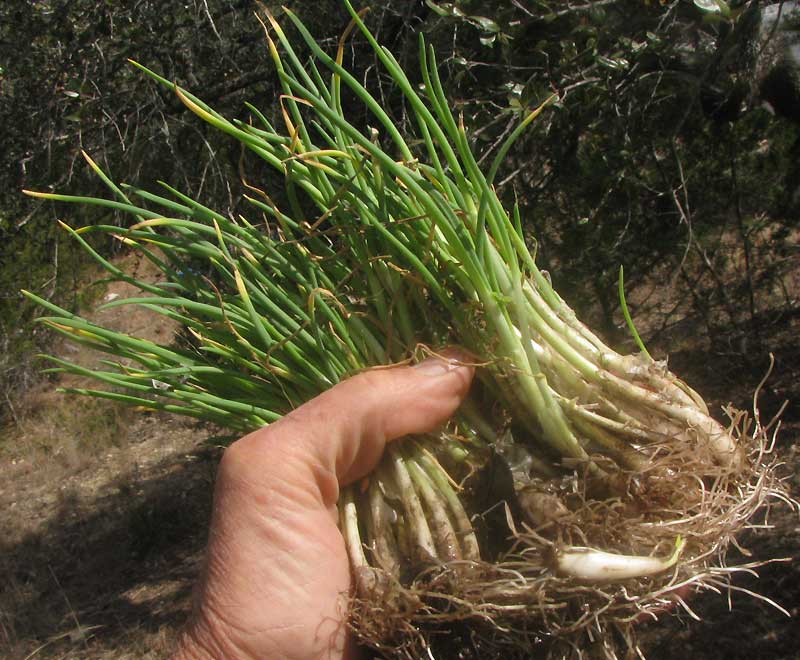Excerpts from Jim Conrad's
Naturalist Newsletter

from the February 9, 2014 Newsletter issued from the Frio Canyon Nature Education Center in the valley of the Dry Frio River in northern Uvalde County, southwestern Texas, on the southern border of the Edwards Plateau; elevation ~1750m (~5750 ft); N29.62°, W99.86°; USA
BUNCH ONIONS
A neighbor in the valley offered a handful of what he called bunch onions, saying that they were taking over a corner of his garden. That's them above.
Probably you know that bunch onions are small "green onions" whose whole bodies are eaten, not just the bulbs, and that the plants grow in clusters. In the picture you can see how stems clump together, each clump developing from a single original plant.
People around here know what you mean when you refer to "bunch onions" but if you look in seed catalogues it's hard to find "bunch onions" looking like ours in the photograph.
For example, this spring's Gurney's seed catalogue offers an "Evergreen White Bunching Onion," but the illustration above that name shows onions with stems much thicker and pulpier than those of ours. They're like little leeks. Gurney's bunching onion appears to be what often is referred to as the Japanese Bunching Onion, Allium fistulosum.
This is a different species from most onion types -- from the big yellow or white slicing onions to regular green onions and shallots -- which are all Allium cepa. Thing is, Allium cepa embraces many cultivars, and the cultivars fall into at least two broad groups, or varieties, one of which produces clumped stems. The "Common Onion Group," is variety cepa, while small onions whose bulbs remain small and whose stems cluster in groups belong to the "Aggregatum Group," variety aggregatum. Shallots are the best known members of this group, but also included are potato onions and other well known cultivars.
So, are our onions bunching onions of Allium fistulosum, or "aggregated" onions of the Common Onion's Aggregatum Group, Allium cepa?
In considering the question it's not to be overlooked that nowadays Allium fistulosum and Allium cepa are caused to hybridize...
Without flowers on the plants shown in the picture, I'm not really sure what we have. "Bunch Onion" is as far as I can go. If I had to guess I'd say that they're one of many cultivars of Allium fistulosum. If after a few weeks of regular watering and fertilizing the stems grow thicker and more succulent, they'll look more like Gurney's bunching onions, Allium fistulosum.
But, if they don't, we'll just hope for flowers, so we can "do the botany."